Khai Dinh Imperial Tomb: Synthesis of Vietnamese and European elements
(VNF) - This hillside monument is a synthesis of Vietnamese and European elements. Most of the tomb’s grandiose exterior is covered in blackened concrete, creating an unexpectedly Gothic air, while the interiors resemble an explosion of colourful mosaic.
Khai Dinh was the penultimate emperor of Vietnam, from 1916 to 1925.
In comparison with those of the preceding emperors, Khai Dinh’s tomb is much smaller in surface (117m x 48.5m) but it is very elaborate. It is the result of the interminglement of many architectural trends: European and Asian, as well as ancient and modern.
The construction of his flamboyant tomb took 11 years, from 1920 year to year 1931, and is the last Hue Imperial tomb. The tomb of Khai Dinh is 10km from Hue in Chau Chu village.
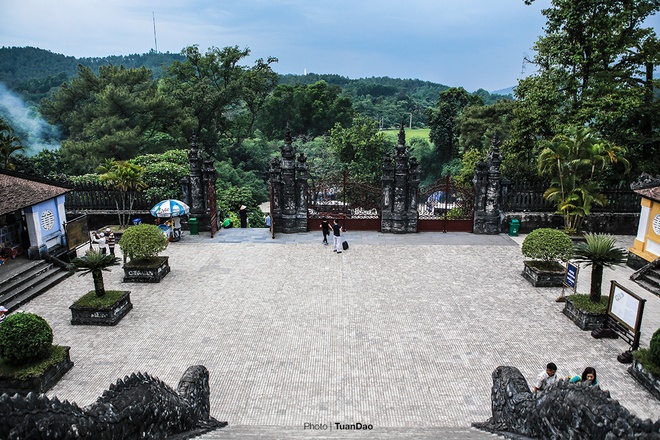 |
At first, the main building brings about a strong Western feel, however, the landscape was arranged to reflect traditional perceptions: a balanced combination between wood, land, water and plants.
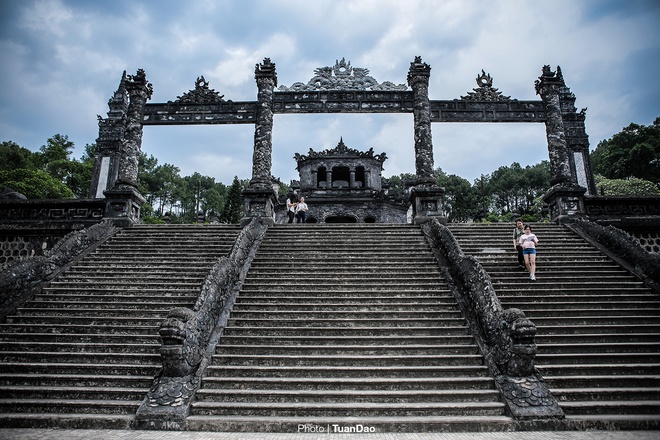 |
Overall, it’s an emerging rectangular structure with 127 steps, leaning against the mountain. Entering the tomb area, one should climb a 37 steps gate with the biggest dragons in the country forming the side walls.
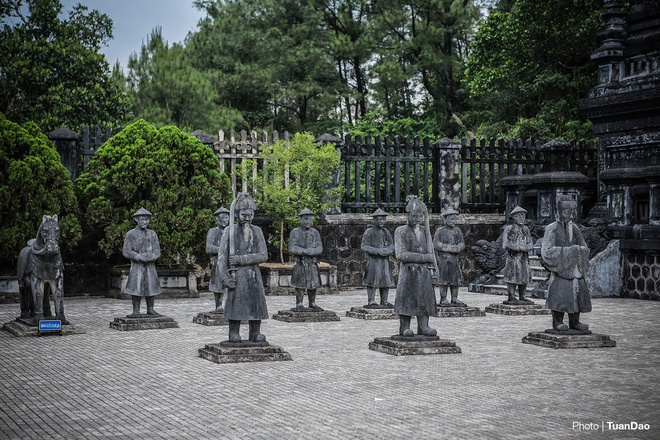 |
Climbing 29 further steps, one is reaching the Honour Courtyard where mandarin honour guards have a mixture of Vietnamese and European features.
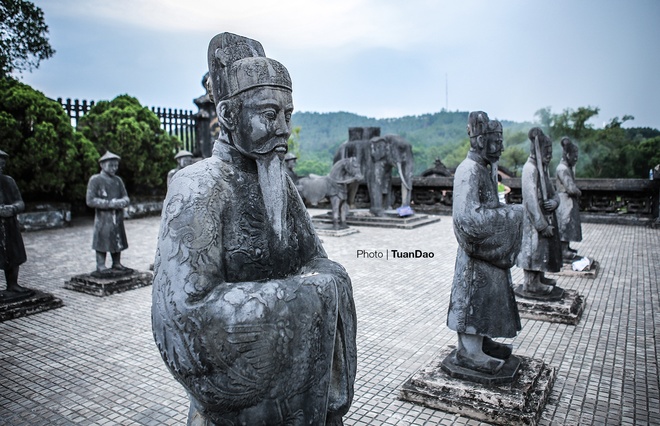 |
These statues are made of stone, a material very rare in Khai Dinh's tomb.
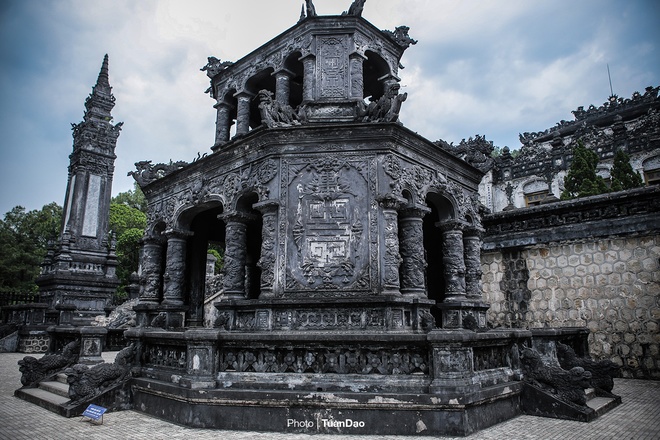 |
In that same place of the Tomb in the courtyard of ceremonies, we have the stele Pavilion, with a Stela engraved in stone on the life and reign of the emperor. This monument is unique, as is the single flag of the stele of all Hue imperial tombs whose shape is hexagonal.
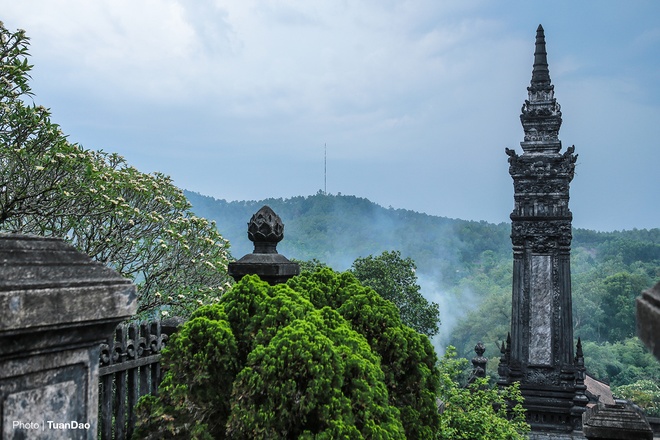 |
The courtyard is flanked on both sides by two high and imposing pillars.
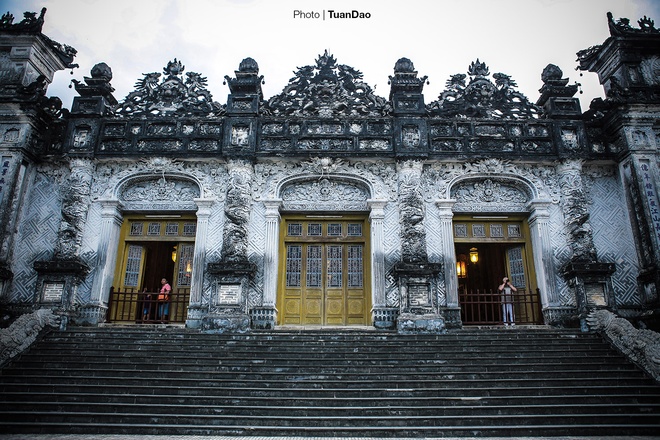 |
Up three more flights of stairs is the stupendous main building, Thien Dinh. The walls and ceiling are decorated with murals of the Four Seasons, Eight Precious Objects and Eight Fairies.
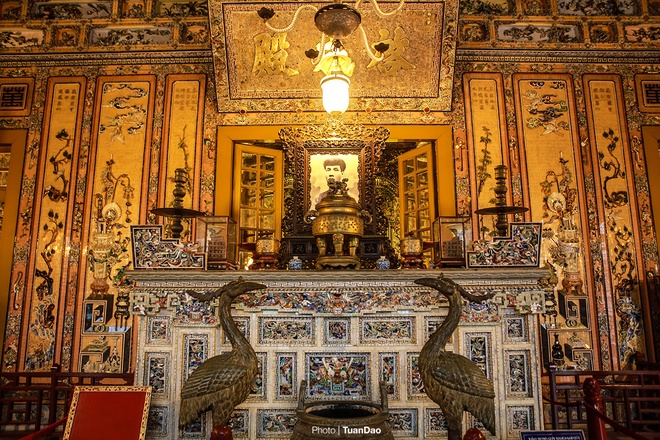 |
The walls are densely decorated and inlaid with elaborate glass and porcelain designs. The floor is covered with enameled flowers bricks and the ceiling is painted with nine dragons, appearing in fine fleeting clouds.
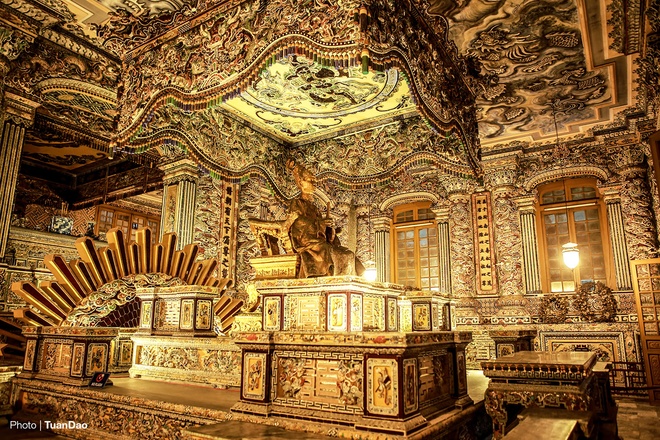 |
Under a graceless, gold-speckled concrete canopy is a precious copper statue of Khai Dinh reflecting the exact size of his which was molded in France in 1920 by two French ducing P. and F. Barbedienne upon the request of Khai Dinh King. His remains are interred 18m below the statue.
The primary responsibility for the creation of artistic masterpieces of Khai Dinh tomb is Phan Van Tanh artisan who is known as an author of three very famous murals "Nine dragons hidden in the clound" decorated on the ceiling of the palace Thien Dinh.
Thanks to the ingenuity and meticulousness of the Vietnamese talented artisans, Khai Dinh tomb becomes the skilled symbol as well as the pinnacle of porcelain and glass. It is worth being a structure bringing History - architecture – art value and having completely different style tombs of kings before./.
Minh Phuong ( Photo by Tuan Dao )
Recommended
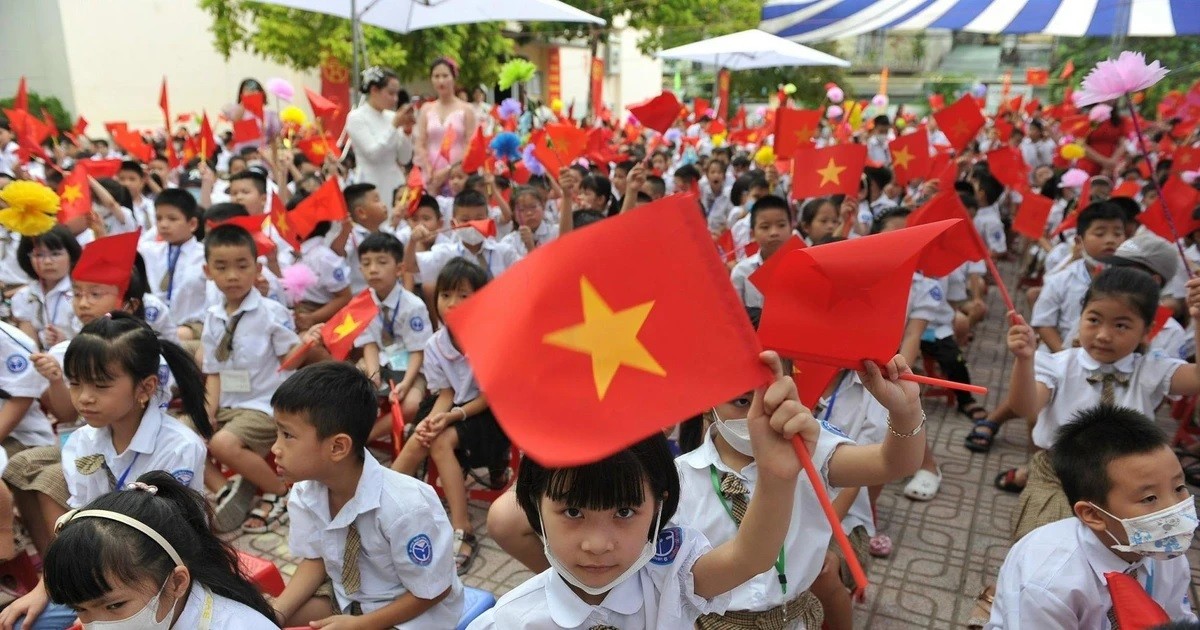 Viet's Home
Viet's Home
Vietnam's Human Development Index Remains High
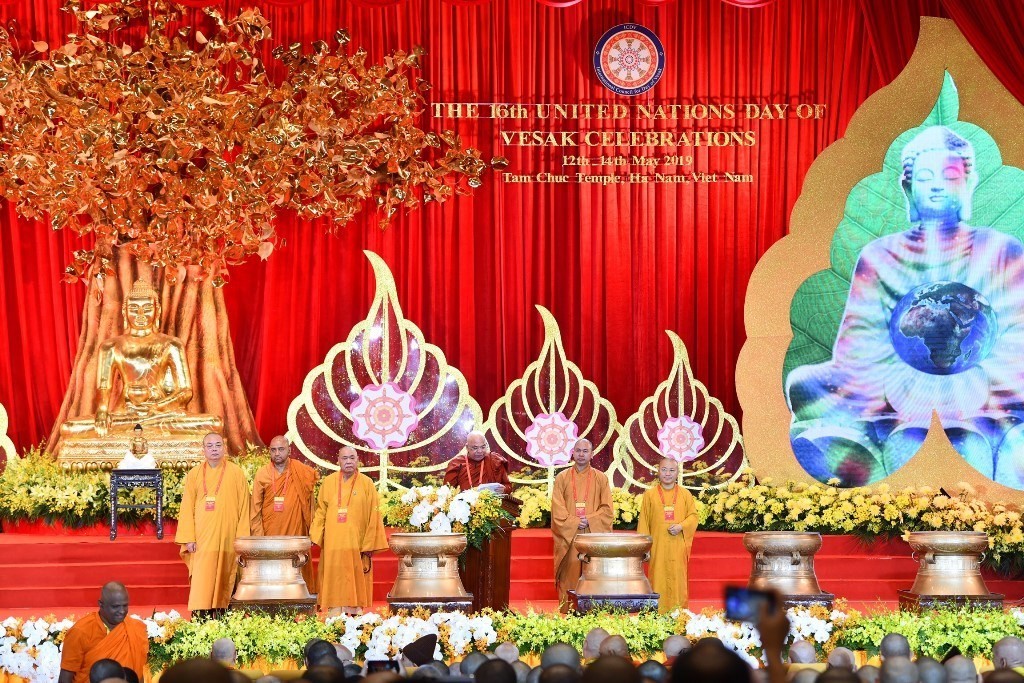 Viet's Home
Viet's Home
Vietnam’s Mark on UN Day of Vesak Celebrations
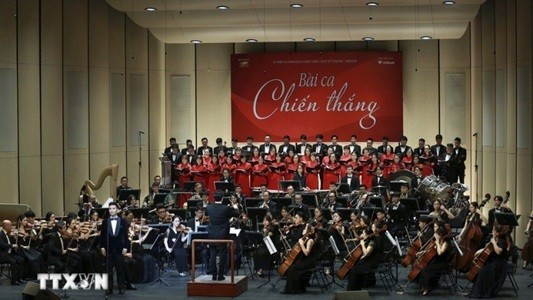 Viet's Home
Viet's Home
Art Program Spreads Message of Peace Worldwide
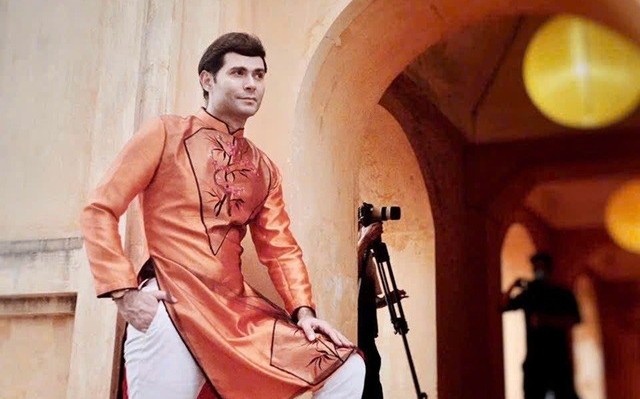 Expats in Vietnam
Expats in Vietnam
Look Forward to New Developments in Vietnam - US Relations
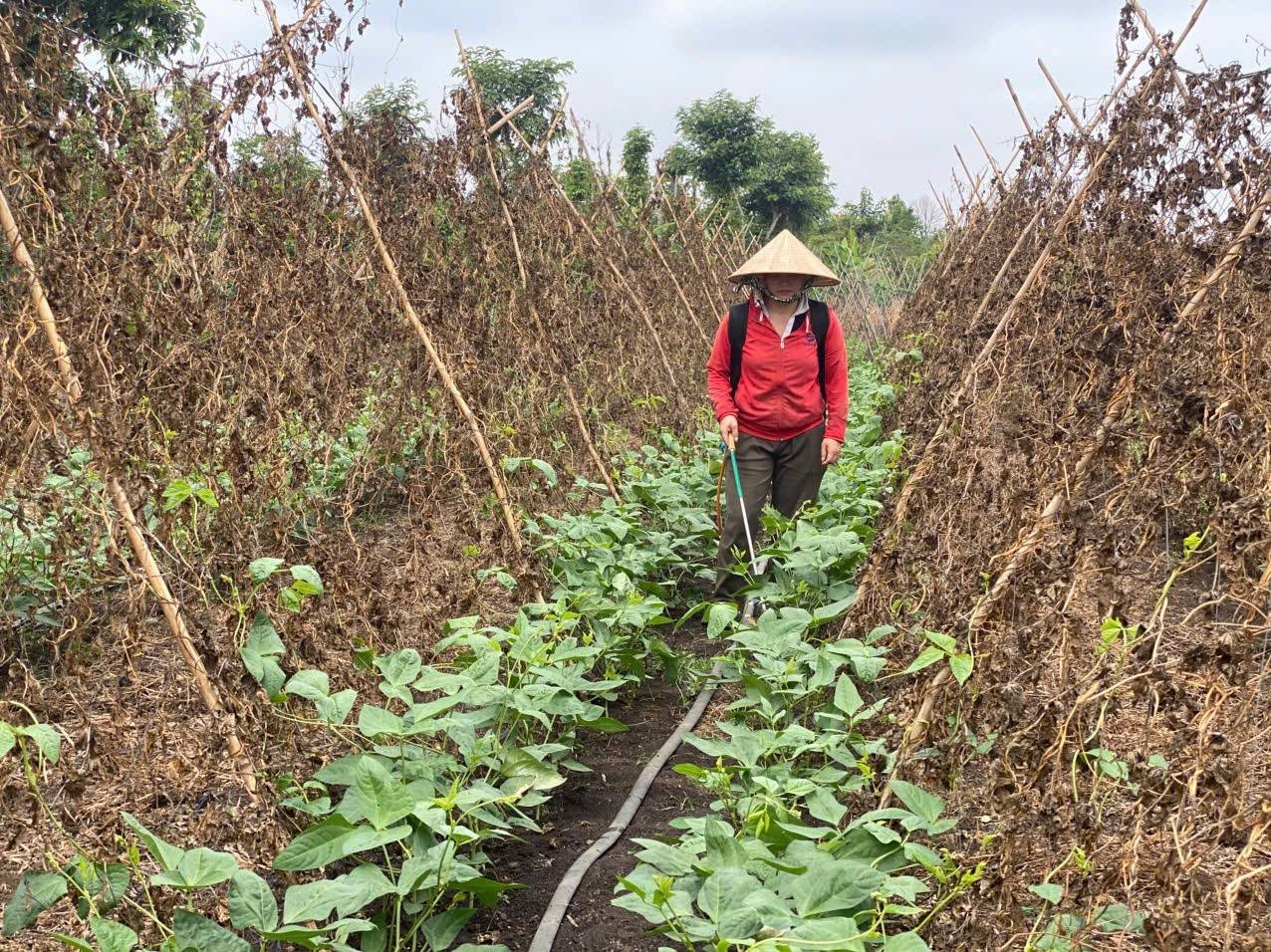 Viet's Home
Viet's Home
She Feeds the World: 8,000 Individuals Adopt More Sustainable Agricultural Practices
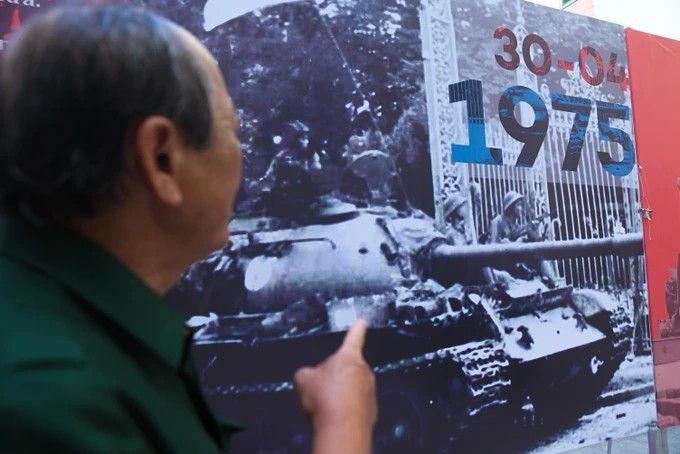 Viet's Home
Viet's Home
Over 200 Valuable Documents Displayed at 'Mountains and Rivers Connected One Strip' Exhibition
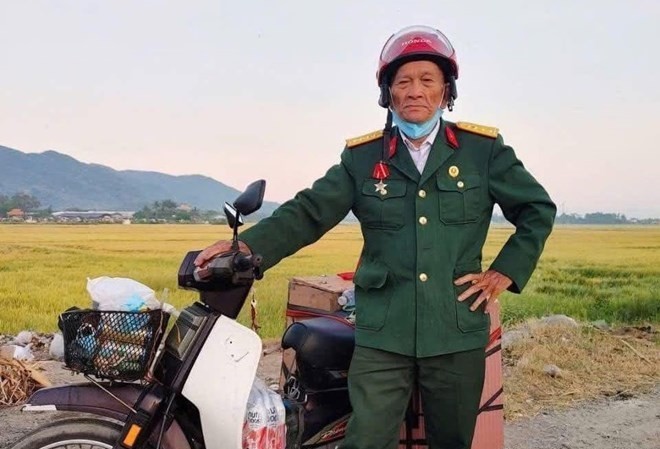 Viet's Home
Viet's Home
Latin American News Agency Prensa Latina Shares Story of Vietnamese Veteran’s 1,200km Journey Back to Former Battlefield
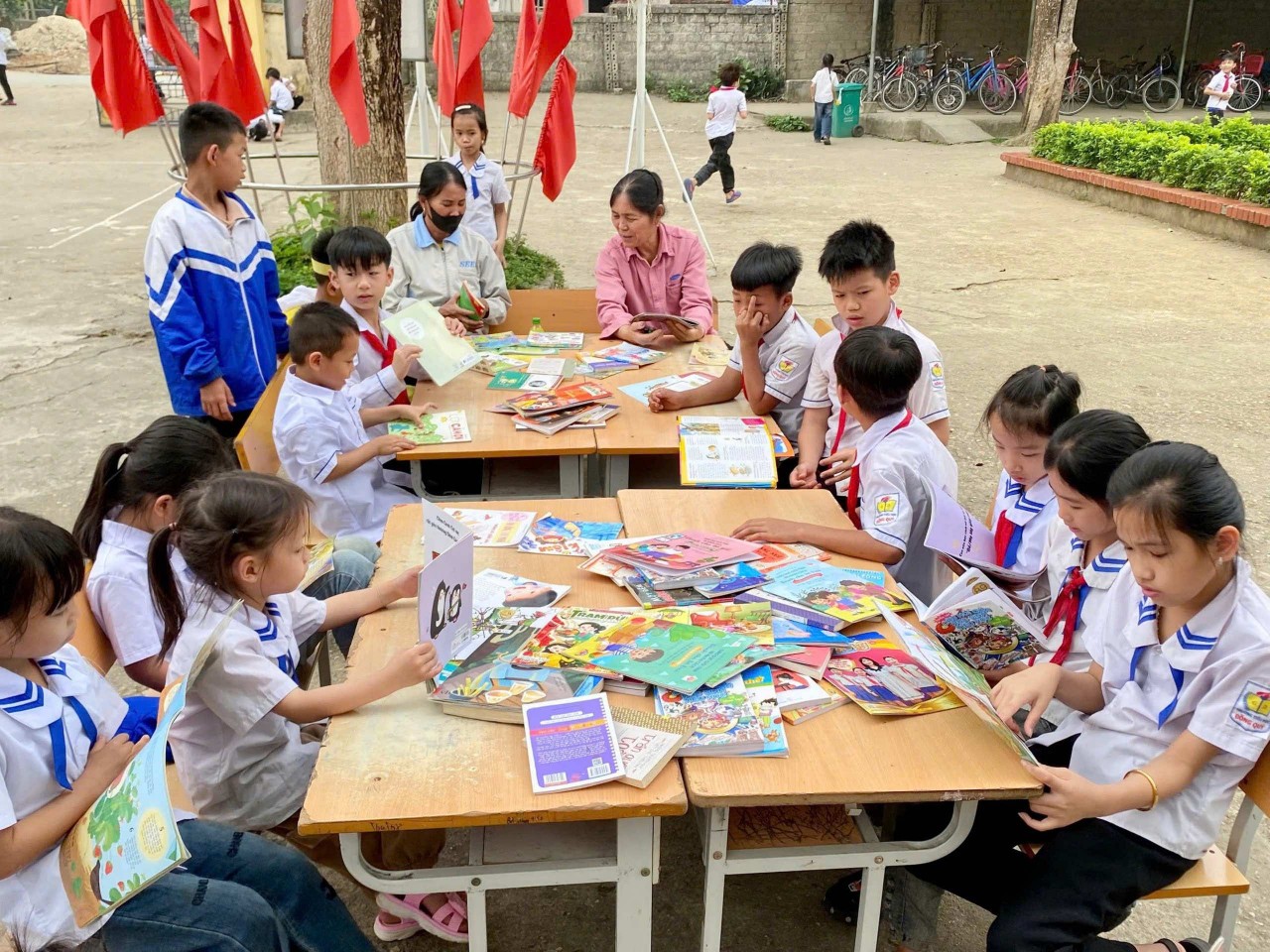 Viet's Home
Viet's Home
